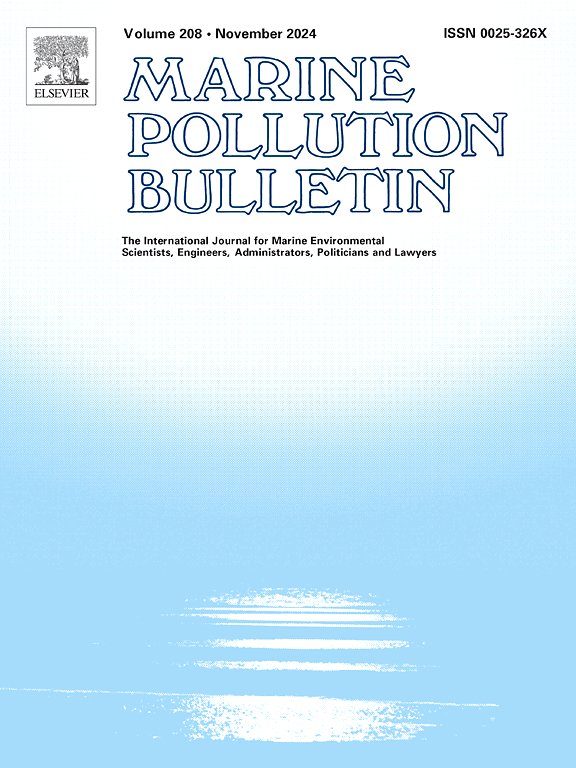Marine litter seen through the lens: photo-identification on beaches as a strategy for coastal monitoring and management
IF 5.3
3区 环境科学与生态学
Q1 ENVIRONMENTAL SCIENCES
引用次数: 0
Abstract
The lack of coastal management leads to economic, social, and environmental problems. In this study, beaches in two municipalities, Laguna and Passo de Torres, located in southern Brazil, were monitored for the presence of marine litter through photographic records. Both beaches experience tourism and fishing activities, with their intensity fluctuating seasonally. Data collection was carried out over the four seasons of the year to assess the density, categories, and spatiotemporal distribution of the debris. A total of 3239 photos were taken across all sampling periods, with the number of photographs per transect varying according to the amount of visible litter. In total, 1694 items were recorded in Passo de Torres and 3935 in Laguna, with an average density of 0.051 and 0.078 items/m2, respectively. Frequency analysis identified six dominant categories of debris per municipality, with five in common: plastic fragments, packaging, plastic bags, cigarette butts, and fishing waste. The only difference was the presence of plastic bottle caps in Laguna and rigid packaging in Passo de Torres. Plastic fragments were the most abundant category, present in all recorded images, with frequencies of occurrence higher than 50 % for both municipalities. Despite seasonal and spatial variations, both beaches were classified as “very clean” throughout the year, according to the Clean Coast Index. These results highlight the need for specific management strategies for each municipality, aiming to mitigate local pollution sources and promote coastal conservation.
透过镜头看到的海洋垃圾:海滩上的照片识别作为海岸监测和管理的一种策略
缺乏海岸管理导致了经济、社会和环境问题。在这项研究中,通过摄影记录监测了位于巴西南部的拉古纳和帕索德托雷斯两个城市的海滩是否存在海洋垃圾。两个海滩都有旅游和钓鱼活动,其强度随季节变化。在一年中的四个季节进行数据收集,以评估碎片的密度、类别和时空分布。在所有采样期间共拍摄了3239张照片,每个样带的照片数量根据可见凋落物的数量而变化。帕索德托雷斯和拉古纳分别捕获1694只和3935只,平均密度分别为0.051和0.078只/m2。频率分析确定了每个城市的六种主要垃圾类别,其中五种是共同的:塑料碎片、包装、塑料袋、烟头和捕鱼废物。唯一的区别是拉古纳的塑料瓶盖和帕索德托雷斯的刚性包装。塑料碎片是最丰富的类别,出现在所有记录的图像中,两个城市的发生频率都高于50%。尽管存在季节和空间差异,但根据清洁海岸指数,这两个海滩全年都被评为“非常干净”。这些结果突出了每个城市需要具体的管理策略,旨在减轻当地污染源并促进沿海保护。
本文章由计算机程序翻译,如有差异,请以英文原文为准。
求助全文
约1分钟内获得全文
求助全文
来源期刊

Marine pollution bulletin
环境科学-海洋与淡水生物学
CiteScore
10.20
自引率
15.50%
发文量
1077
审稿时长
68 days
期刊介绍:
Marine Pollution Bulletin is concerned with the rational use of maritime and marine resources in estuaries, the seas and oceans, as well as with documenting marine pollution and introducing new forms of measurement and analysis. A wide range of topics are discussed as news, comment, reviews and research reports, not only on effluent disposal and pollution control, but also on the management, economic aspects and protection of the marine environment in general.
 求助内容:
求助内容: 应助结果提醒方式:
应助结果提醒方式:


